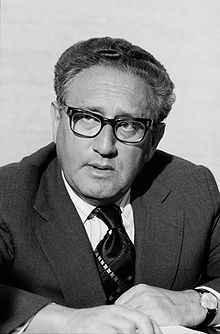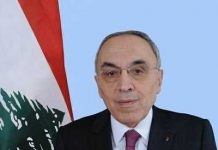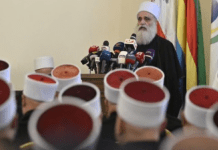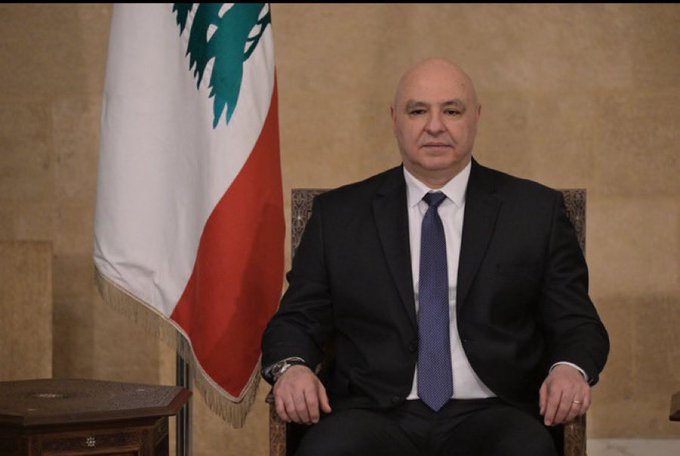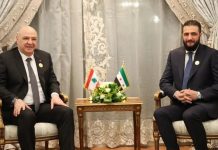Kissinger’s Touches in the Middle East
Eyad Abu Shakra/Asharq Al Awsat/February 13/16
Henry Kissinger, the doyen of American diplomacy and global strategies, does not like retirement. He believes he has never been out of touch with world affairs and still has a lot to offer in terms of finding solutions and eliminating any threats to the interests he defends. Actually, I believe wise Russians still remember his leading role behind Richard Nixon’s ‘opening up’ policy toward Communist China, which was an integral part of the calculations of the then US – Soviet ‘bi-polar rivalry’.
Dr Kissinger’s strategy was to weaken the Communist threat through widening and exploiting the rift between the two Communist giants, the USSR and China, while skillfully managing the tricky ‘co-existence’ with the Soviets. His success was spectacular as the Chinese giant was brought out of the cold and neutralized, and later Washington managed to turn the Afghani quagmire into the USSR’s Vietnam’.
Kissinger’s destructive strategic planning did not stop at isolating the USSR, embroiling it in trouble, and then exhausting and partitioning it, this was equally experienced by the Arab world. Many Arabs recollect the ‘ventures’ of “Dear Henry” – as the late Egyptian President Anwar Sadat used to call him – perhaps the most significant of which was the October 1973 (Yom Kippur) War, which was ‘tactically’ fought by Egypt and Syria after the then leaders of the two countries overthrew Moscow’s friends in two Washington-friendly “corrective movements” in Damascus (autumn of 1970) and Cairo (1971).
Hafez Al-Assad’s and Anwar Sadat’s regimes were in reality fruits of ‘Kissingerism’, not only in terms of regional realignment, but also – and more significantly – in terms of unearthing the anathema of sectarianism in the two counties bordering Israel.
The true sectarian nature of the Syrian regime is now clear to all to see, while exploiting religion in Sadat’s political battles (namely against ‘Arabists’ and Leftists) in Egypt was instigated by the “Believer ( i.e. Muslim) President”. Incidentally, as the once ‘secular’ regime in Damascus turned Syria into a base for Iran’s Revolutionary Guards and protectorate of Hezbollah, the “Believer President” became the first Arab head of state to shake hands with Menachem Begin and establish full diplomatic relations with Israel.
Today, Dr Kissinger is preaching cordial relations and cooperation between Moscow and Washington against the background of negative rhetoric regarding the Ukraine and Syria. The other day I read a piece written by Dr Kissinger in which he told the story of his collaboration with the late former Russian statesman, journalist and ‘Orientalist’ Yevgeny Primakov, in creating and co-chairing a group of retired American and Russian politicians and military figures known as Track 2 between 2007 and 2009. The objective of this group was to improve relations and dissipate all tensions, old and new, that may afflict these relations.
The former American Foreign Secretary and National Security Advisor wrote in detail about the efforts of the group and its contacts with the Kremlin and the White House; particularly, with regards to the Ukraine and Syria.
As far as the latter is concerned he wrote: “Regarding Syria, it is clear that the local and regional factions cannot find a solution on their own. Compatible U.S. – Russian efforts coordinated with other major powers could create a pattern for peaceful solutions in the Middle East and perhaps elsewhere”. He concluded by saying that such solutions can only come about through “a willingness in both Washington and Moscow, in the White House and the Kremlin, to move beyond the grievances and sense of victimization to confront the larger challenges that face both of our countries in the years ahead”.
Indeed, Kissinger’s words about the Middle East in general, and Syria in particular, fully complement the policies of the Barack Obama administration. Moreover, what has been said about Washington being less inclined now to be involved in the Middle East in order to concentrate on the potential threat posed by China seems to be related somehow to Kissinger’s efforts to bring Washington and Moscow ever closer. In the past he unleashed the Chinese giant order to weaken the USSR, and now he is cooperating with the Russians as a means to keep China at bay.
On the other hand, Washington has another obsession that has engendered a dangerous impression in the aftermath of the September 11th attacks. This impression, widely shared by American politicians and the military, is that the West can never co-exist with a multi-leadership ‘Sunni Political Islam’ but it definitely can with a single-leadership ‘Shi’i Political Islam’. Iran, the only country officially ruled by ‘Shi’i Political Islam’, represents the best example of efficient control and discipline insured by a single authority. This ‘Shi’ite Iran’ is now a very valuable and important Asian and Arabian Gulf player in Washington’s calculations.
Hence, trying to win over Iran as an ally makes sense for Washington, more so, since the Tehran leaders – like the Kremlin leadership – regard themselves fighting on the same front in the open-ended war against ‘Sunni Political Islam’.
Add to the above the fact that the present tension between Russia and Turkey – which has been brought back by Recep Tayyip Erdogan under the banners of ‘Sunni Political Islam’ – represents a vital element in the process of redrawing the geo-political map of the whole Middle East, not only the ‘near east’ of the Fertile Crescent.
Based on this, the unfolding tragic events in Syria give the impression that there is an implicit agreement between Washington, Moscow and Tehran, with Israel’s approval, on the following:
1. To destroy ‘Sunni Political Islam’ throughout the region at any cost.
2. To take the Kurds out of the equation as a prelude to creating a ‘Greater Kurdistan’ which may not leave Turkey unscathed.
3. After eradicating any ‘Arab option’, first by Washington and later by Tehran, to move forward with the plans to establish new sectarian entities replacing the old and dilapidated ‘Sykes-Picot Agreement’ entities now approaching 100 years old.
4. To benefit from China’s – the future adversary – mutual interest in fighting the two common enemies: ‘Sunni Political Islam’ and Turkic nationalism, both currently fuelling the separatist struggle in Xinjiang Uyghur Autonomous Region (or East Turkestan).
How would or should the Arabs react? I think they have no choice but to realise the interest-based ingredients of the wide international alliance before them, and comprehend that fighting the whole world is not the answer; especially since ‘Political Islam, both Sunni and Shi’i, has caused the region enough disasters.
In fact, some of the worst atrocities attributed to extremist ‘Sunni Political Islam’ were hatched in the intelligence agencies in countries ruled by ‘Shi’i Political Islam’. In addition to dubious ISIS, the links of some Al-Qaeda figures with Iran are well-known and documented, and so are the diligent efforts of the Syrian regime’s intelligences apparatus in creating and orchestrating the activities of ‘Fatah Al-Islam’ in Lebanon and the Abu Al-Qa’qa’ phenomenon and his Al-Qaeda “gifts” to Iraq.
















